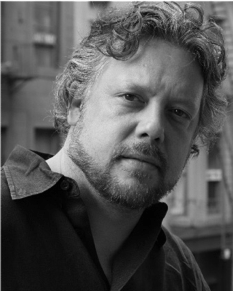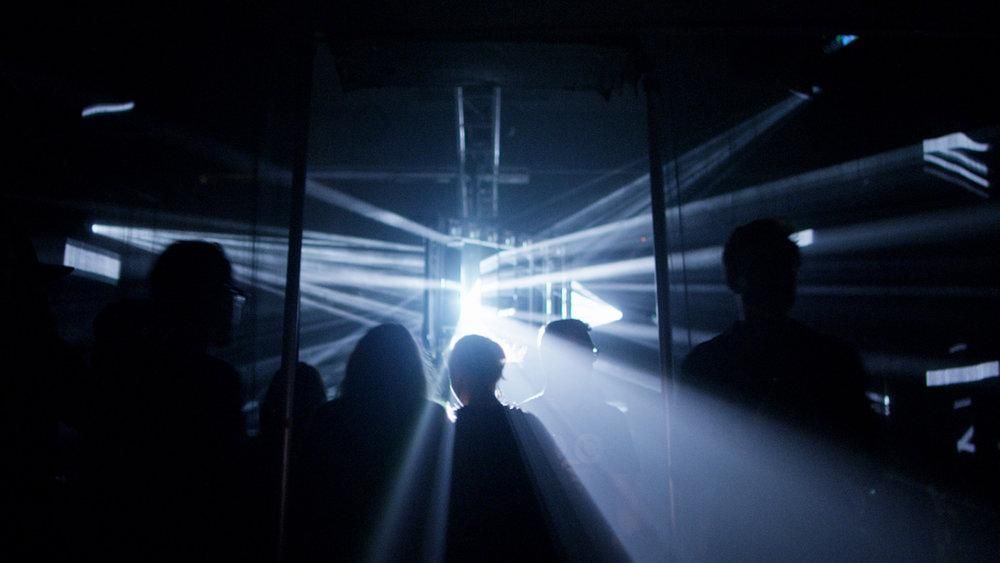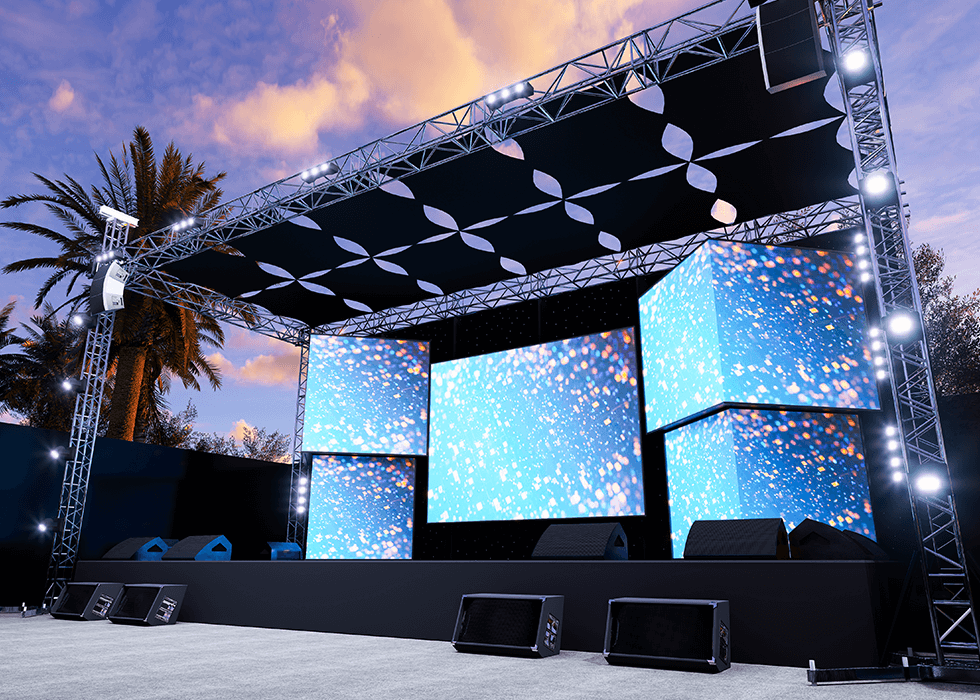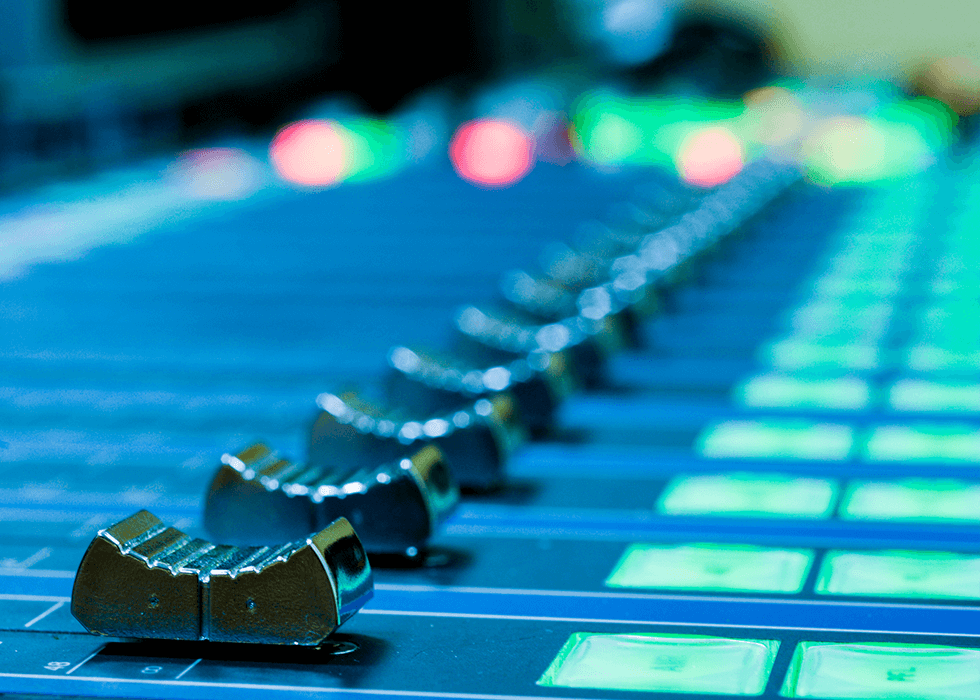Q&A with David Bianciardi: “Our spaces miss us, and we miss being in them together”

AV&C, the experience design studio and art practice founded by David Bianciardi in 2000, continues to lead the evolution of digital landmark design and creation. As one of the core thinkers and speakers on how media enhances the built environment, Bianciardi was one of the first guests on the new TIDE Generator podcast, joining the first episode to discuss “What’s Next for the Built Environment?”.
Listen to the TIDE Generator podcast on Anchor and Spotify.
Designing digital media experiences that create connection between humans and the built environment can help give voice to a venue, company, event, or brand. What elements of virtual interactions will we see pulled through into the built environment as we re-enter the world with new standards for health and safety?
David Bianciardi is founder and principal of AV&C – a globally recognized experience design studio creating responsive digital landmarks in the physical world.
Bianciardi started his career as a musician, composer, and sound designer and soon discovered that using software and technology to make things talk to each other was useful in creating designed experiences and connected places.
And Bianciardi wonders in the Q&A below, how will the responsive AV installations we’ve created react when we return?
How does your experience as a musician influence the work you do now?
As a composer I learned that while music is the least literal of artforms, it pretty universally evokes powerful emotion and creates both shared experience and personally memorable moments. Music is also a temporal thing – it happens in time – it isn’t a static object. I definitely see clear parallels between how music connects and engages with people’s curiosity, emotion, intellect, and how we at AV&C go about designing and creating responsive environments. Much of our visual work, even when image based, employs abstraction and metaphor to leave space for individual experience. As with a musical audience, the shared moments still have room for personal interpretation and meaning, so it helps us achieve a storytelling context where we really do curate the arc of the experience but allow space for people to find individual connections and meaning.
Tell us more about your art practice, what’s a non-commercial project you’re excited about?
Our studio’s art practice runs alongside our client design projects, and while the two sides share a lot of the same techniques and technologies, the goals and outcomes are quite different. The objective on the art side is to give voice to internal expression and exploration, and the focus has been on light as a tangible, temporal, emotive material. If you look at some of the work, like lull or phases, we might employ the same projectors as we’d use in a commercial project, but here we aren’t interested in their ability to create a high resolution video raster – we’re using them as structured light cannons to carve the space with. The interchange goes both ways, we’ll often discover something in studies for an art piece that later makes its way into R&D for client work. In that way the commercial and art practices of the studio are distinct, but in dialog.
 Exploring light as a kinetic sculptural medium, phases is composed of robotic mirrors that scatter a kaleidoscope of projected beams around a circular scrim enclosed space filled with a generative musical score.
Exploring light as a kinetic sculptural medium, phases is composed of robotic mirrors that scatter a kaleidoscope of projected beams around a circular scrim enclosed space filled with a generative musical score.
What new ideas in immersive experiences are you excited about?
As I write this on what feels like day 934 of quarantine, missing my colleagues, missing having a sense of a plannable future, I find myself thinking about how the responsive places we’ve created out in the world are waiting for their humans to re-inhabit them, experience them, and bring them to life again. Most of AV&C’s work is responsive to the behavior of the humans in the space through sensors and feedback loops and machine learning. So, in that sense our spaces miss us, and we miss being in them together.
Our field is about people, in places, having experiences, so we’ve all been feeling tectonic effects in these first months of our new reality. But … there are things to be excited about! Humans are arguably the most sociable species. We are going to get together again. The question is how and when, and what we will bring with us from our recent shared experience of being isolated and how we’ve learned to explore interconnectedness in new digital ways.
On the whole I hear and share a lot of enthusiasm from the broader experience design community these days. All these new ways our clients and their audiences will soon be together in hybrid digital/physical/virtual spaces will benefit from the holistic approach of an experience design practice. On the “boards” at AV&C right now we have a number of amazing projects, each of which has an opportunity to reflect both the new constraints and the new possibilities. In the end, design responds to challenges, and there are plenty requiring thoughtful response in these times.
How do AV integrators fit into the experience design process?
Ideally, early. This kind of work is an interdisciplinary team sport, and the way to achieve the holistic project outcomes our clients expect is to do the work through a seamless process that includes architects and physical designers, storytellers, experience designers, content creators, software developers, creative technologists, systems designers and integrators, and folks from the construction and fabrication world. If those voices aren’t at the table in a coordinated way from the beginning, the clients’ best outcomes won’t be realized.
But if you’re going to join the party early, know what’s going on and how you can help. Immersion, discovery, and concept phases are mostly about asking questions, not necessarily having the answers. It isn’t a competition to get to “solution” or “part number” the fastest, but actually a time to explore many possibilities; some of which may require more or less technical input (or implementation scope). I think AV integrators have a lot to contribute in those early days by bringing in their curious and open-minded folks (i.e., design thinkers) who see value in contributing early rather than waiting for a bid set.
What does technology not do now that you wish it did?
At our firm we use technology (hardware and software) more as raw materials that we put together in new combinations that do pretty much what we want, within the laws of physics. Sure, we’re all waiting for video paint, but what I most wish technology did was to be serviceable and upgradable, and to disassemble into efficiently recoverable raw materials for new value stream.
Up Next: Listen to the TIDE Generator podcast to hear more from Bianciardi in a conversation with Gideon D’Arcangelo, Leader of the Experience Design Group at Arup, about the hybrid forms our buildings will take in the near future.





